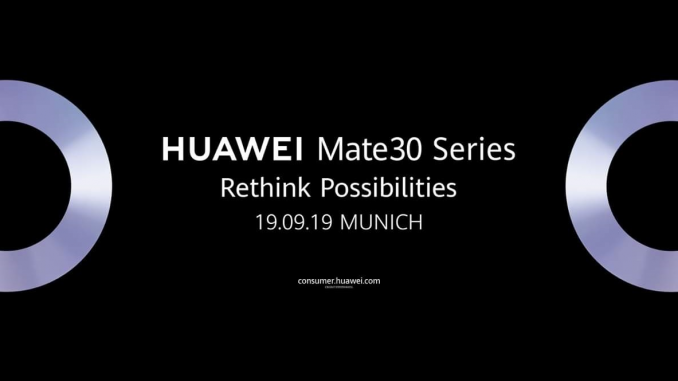
This past 19th of September, Huawei introduced the Mate 30 series in Munich, Germany. This specific article focuses on the Mate 30.
Artículo disponible en Español | Article disponible en Français
Starting with the design, the Huawei Mate 30 shares the same design as the Mate 30 Pro, having the same industrial look at the top and bottom of the device, introduced with the P30 series, as well as the same round camera module, instead of the square module from the Mate 20 series:
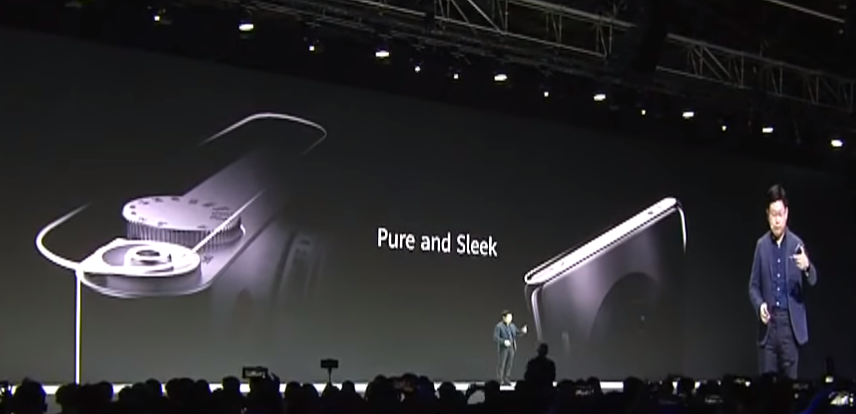
On the Mate 30, Huawei is using a flat panel for the display, contrary to the Mate 30 Pro which uses a curved one, in a similar way to what the company has already done in the past with the Mate 20 and the P30. The resolution is 2340*1080 pixels, for a 6.62 inches OLED display.
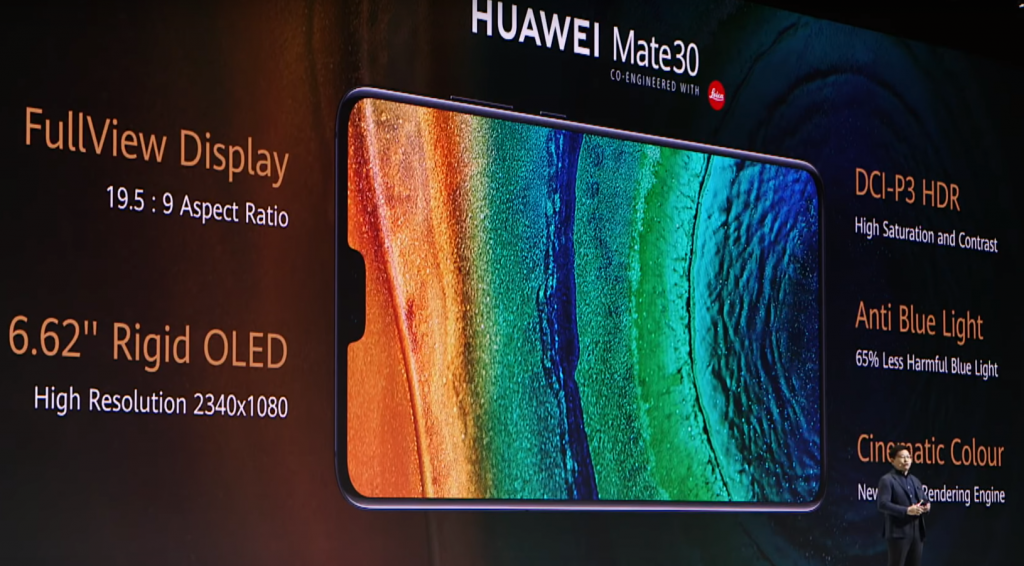
Size and weight-wise, the company has kept the bezels to a minimum, at 2.8 millimetres. The top and bottom area have 4.0 millimetres borders, that blend with the metal frame, and the device stays at 196 grams, slightly heavier than its predecessor. The device is 160.8×76.1×8.4 millimetres in size.

Battery-wise, the Mate 30 gets a bump, from 4 000mAh to 4 200mAh, as well as an improvement in the charging speed and wireless charging, until now reserved to the “Pro” variant of Huawei’s phones. In other words, both the Mate 30 and the Mate 30 Pro support the 40W SuperCharge, and Huawei’s new 27W wireless charge. The company has named this new wireless charging “Wireless SuperCharge”. We also see the addition of reverse wireless charging on this model, being 3 times faster than the reverse charging found on the previous generation, the Mate 20 Pro.
Camera-wise, the Mate 30 series debuts what the company calls a SuperSensing Camera Array. On the Mate 30, this one is composed of 3 lenses. We first have the usual ultra-wide camera, of 16MP, with an equivalent focal length of 17mm and a f/2.2 aperture, together with a SuperSensing wide camera of 40MP and an equivalent focal length of 27mm with a f/1.8 aperture. Finally, we have a telephoto camera of 8MP and an equivalent focal length of 80mm and f/2.4 of aperture, with optical stabilization. The camera also includes laser focus, an ISO of 204 800 and can take macro shots as close as 2.5 centimetres. In terms of zoom, the Mate 30 offers a 45x zooming range, going from ultra-wide to 3x optical zoom and 30x digital zoom. The camera also has both optical image stabilization for the 8MP telephoto lens and uses artificial image stabilization on the rest:
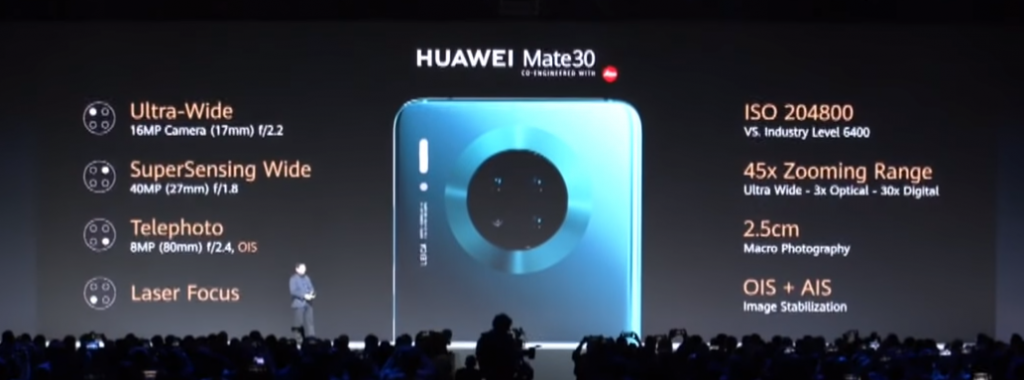
Sensor-wise, Huawei continues using a RYYB sensor, just as the P30 series, allowing it to capture better images under low-light situations. As per usual, Huawei didn’t spend long talking about the camera of the Mate 30, instead focusing on the Mate 30 Pro, although this is understandable, with the Mate 30 Pro being the star of the show. While the camera on the regular Mate 30 is likely an excellent camera too, it lacks all the extra new features from its big brother, just as past Huawei offerings. On the front, we find a 24MP camera, coupled with a 3D depth-sensing camera for the smart gesture controls seen on the Mate 30 Pro.
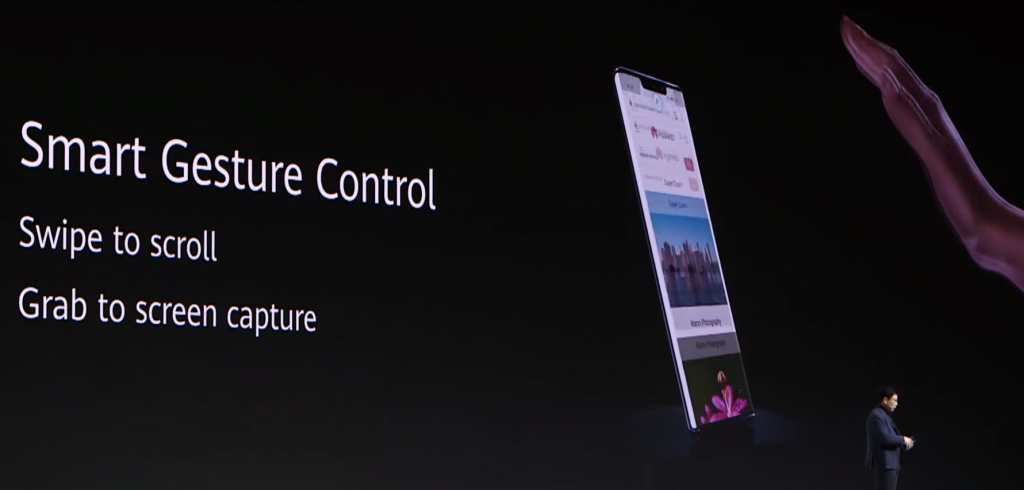
For colours, the Mate 30 is available in the same colours as the Mate 30 Pro, being Space Silver, Emerald Green, Cosmic Purple, Black, Vegan Leather Forest Green and Vegan Leather Orange. As mentioned in our Mate 30 Pro article, “Vegan leather” is actually fake leather, usually made of chemicals, in most cases just being plastic.
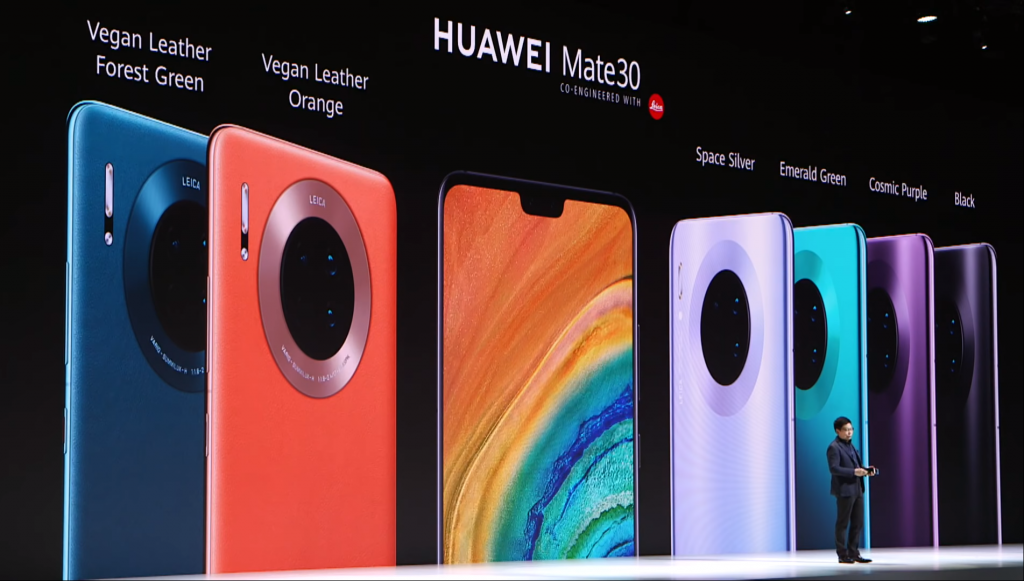
In terms of pricing, the Mate 30 will retail for 799€ for the 8GB+128GB variant. While not explicitly mentioned during the presentation, the model showcased is the 4G variant, which comes with the Kirin 990 7nm, which is slower and less power efficient than its 7nm+ EUV counterpart, the Kirin 990 5G, which also has Huawei’s 5G modem, the Balong 5 000, integrated in the die package. Huawei only mentioned the 8GB+128GB variant in 4G, but it is likely we’ll be seeing a 5G variant too, as well as other memory configurations:
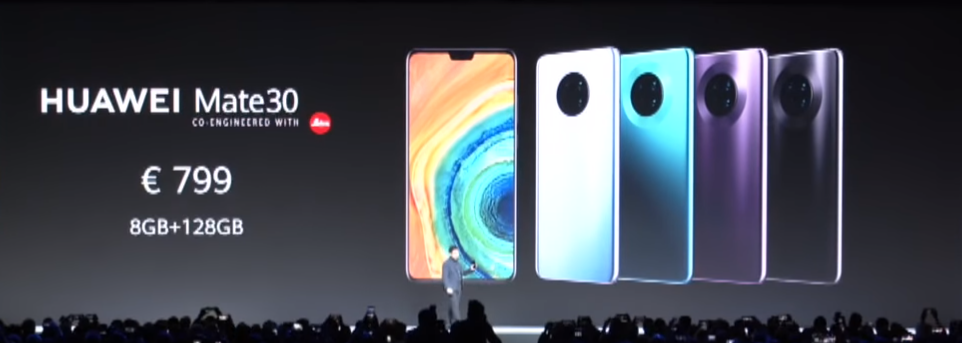
The full specifications of the Mate 30 presented are as following:
- Kirin 990 4G
- 8GB of RAM
- 128GB of internal storage, expandable with nano-memory card, up to 256GB
- 6.62” Rigid OLED display, with 2340*1080 pixels resolution, notch
- 19.5:9 Aspect ratio, DCI-P3 HDR
- Anti-blue light, with 65% less harmful blue light
- Cinematic colour
- 160.8×76.1×8.4, 196 grams
- Rated IP53
- In-screen fingerprint sensor, facial recognition
- Front camera, 24MP (f/2.0) RGB
- Leica triple camera:
- 16MP (Ultra-wide, 17mm, f/2.2)
- 40MP (SuperSensing wide, 27mm, f/1.8)
- 8MP (Telephoto, 80mm, f/2.4, OIS)
- 4 200mAh battery, USB Type-C charger, 40W SuperCharge, 0-70% in 30 minutes
- 27W wireless charging, supports wireless reverse charging
- EMUI10/Android 10
- Supports Huawei M-Pen
- Wi-Fi 802.11 a/b/g/n/ac, 2.4/5GHz, Bluetooth 5.1, Type-C, GPS/AGPS/GLONASS/BeiDou/Galileo/QZSS, NFC, dual-SIM
- Headphone jack
- Available in 6 colours: Black, Space Silver, Cosmic Purple, Emerald Green, Vegan Leather Orange, Vegan Leather Forest Green
- The price is as follows:
- 8GB/128GB (4G): 799€
More on this subject:


